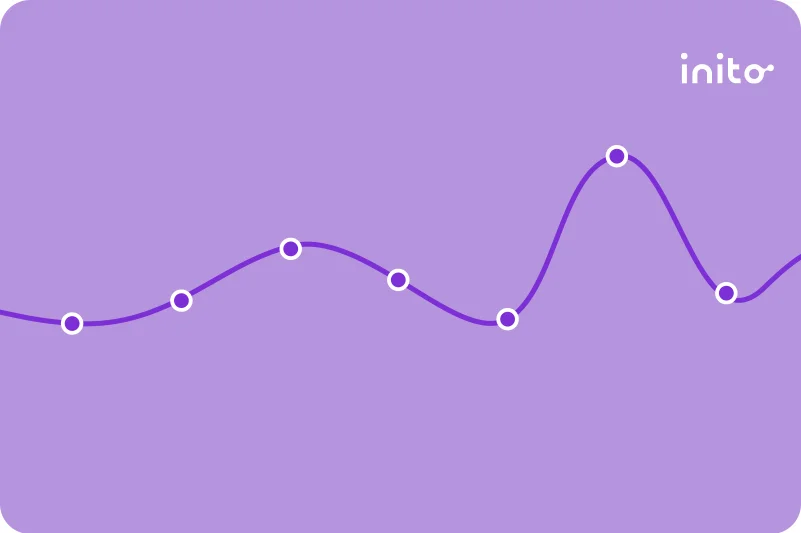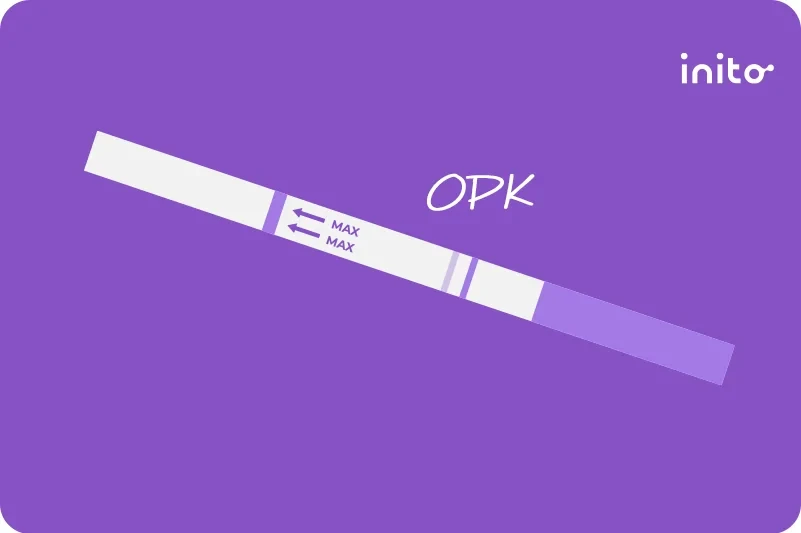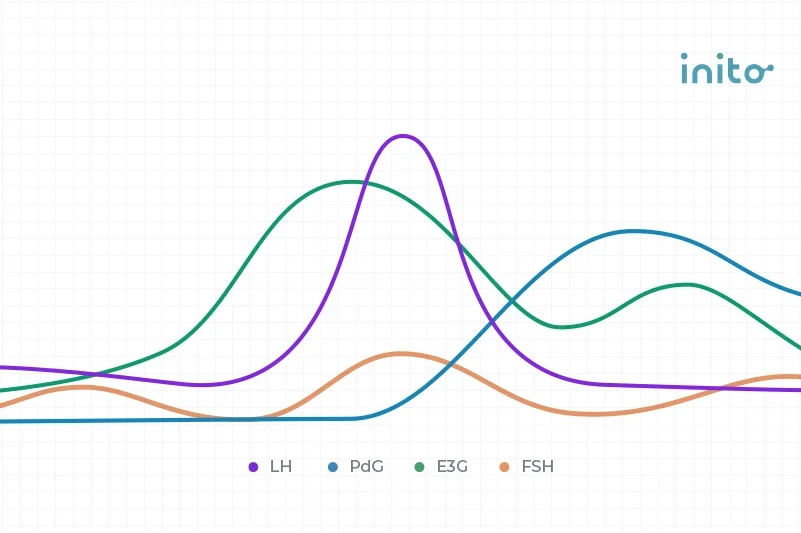Content table
Over 50% of women who menstruate experience pain for 1-2 days per month.
But are painful periods normal?
Yes and no.
Minor period pain is considered normal, but severe pain is not.
However, no level of period pain equates to good fertility.
It’s time to look deeper into your monthly cramps and what they may be trying to tell you. What’s considered “normal” period pain is very different from the type of pain that’s severe. The latter is a warning that bigger, underlying issues are at play.
Key Takeaways
- Painful periods might be a red flag for fertility issues.
- Severe menstrual cramps may be due to endometriosis, adenomyosis, uterine fibroids, or pelvic inflammatory disease.
- Endometriosis is when the uterine tissue is present outside of the uterus. It can cause irregular ovulation and implantation issues.
- Adenomyosis is a condition where the inner endometrial tissue grows inside the muscular layer of the uterus. This can lead to menstrual cramps and fertility struggles.
- Uterine fibroids are non-cancerous growths that lead to pain and potentially block implantation.
- Pelvic inflammatory disease (PID) is an infection in your uterus, fallopian tubes, or ovaries. If left untreated, it may cause fertility problems.
- Signs of good fertility include regular periods, ovulation, and normal hormone levels.
- You can check your hormone levels by using Inito. This monitor provides you with actual numerical values.
- You want to see a doctor when your period pain becomes severe.
- Also see a doctor if you’re experiencing pelvic pain, pressure or heaviness, heavy bleeding, vaginal discharge, or have a fever.
- Manage your painful menstrual cramps with light exercise, relaxation techniques, using a heating pad, and over-the-counter NSAIDs
Are Painful Periods a Sign of Good Fertility?
Painful periods (a.k.a. dysmenorrhea) is not a sign of good fertility. No research shows a correlation between the two.
There’s a bit of a gray area when it comes to pain. That’s because pain is subjective. What someone might consider mild may be severe for someone else.
Just know that it’s normal to feel your idea of mild to moderate pain during your period. It’s called primary dysmenorrhea. This happens due to the release of chemicals called prostaglandins.
These prostaglandins are made in the uterine lining and signal your uterus to contract, resulting in cramps.
On day 1 of your period, your prostaglandin level is high. For most women, as period continues and you shed your uterine lining, the level goes down and with it, your pain.
For others, the pain stays high due to an underlying condition that makes pregnancy more difficult. This kind of pain is not normal and is called secondary dysmenorrhea.
Primary dysmenorrhea | Secondary dysmenorrhea |
Minor, manageable pain | Debilitating pain |
Pain that happens due to prostaglandins | Pain that happens due to an underlying condition |
Pain decreases as your period continues and you shed your uterine lining | Pain stays high throughout your period. There may be pain at other times in your cycle as well |
Can be treated with OTC pain medication and other pain remedies | Can be treated by addressing the cause |
Typically improves with age | Typically gets worse with age |
What Causes Painful Periods?
Severe period pain is the one that interferes with your daily activities.
And this kind of pain = red flag.
Here are some of the potential causes behind painful periods.
Endometriosis
Endometriosis happens when your uterine tissue grows outside of the uterus. It affects 10-15% of women who menstruate.
Why does endometriosis cause pain?
Because it results in inflammation, adhesions, scarring, and hormonal changes in the endometrial tissue.
Besides painful periods, endometriosis can also make getting pregnant more challenging. That’s because it causes:
- Painful intercourse
- Abnormal ovulation
- Fallopian tube occlusion
- Implantation issues
But, how do you know if what you’re experiencing is endometriosis? Here are the symptoms:
- Severe pain that interferes with daily activities
- Nausea and vomiting
- Pain during peeing and defecating
- Pain during/after sex
- Fainting due to pain
If you’re experience any of these symptoms, schedule an ultrasound with your doctor. Once they confirm endometriosis, medications such as hormonal birth control can be used to manage endometriosis symptoms.
Learn more: Your Guide to Getting Pregnant With Endometriosis
Adenomyosis
Adenomyosis is when your endometrial tissue grows in the muscle of your uterus. It can cause extreme pain and also painful periods.
This condition can mean trouble for IVF, pregnancy, and live birth rate. It also increases your risk of miscarriage.
The signs of adenomyosis include:
- Painful menstrual cycles
- Heavy bleeding
- Painful sexual intercourse
- Lower abdominal pressure
If this sounds familiar, you want to get a pelvic exam or an ultrasound to test for adenomyosis.
Uterine fibroids
These fibroids are muscular, non-cancerous growths that grow from the uterine muscle tissue.
Small fibroids are typically harmless, but the bigger ones are a different story. They can push the surrounding tissue, which translates to pain and heavy bleeding.
This happens when the fibroids have outgrown their blood supply and begin to die. As the fibroid degenerates, its byproducts can cause abdominal pain.
Fibroids can also decrease fertility. They risk blocking the fallopian tubes, preventing implantation, or changing the womb environment.
The symptoms of uterine fibroids include:
- Heavy menstrual cycle
- Pain during sex
- Abdominal or lower back pain
- Constipation
- Cramps
Worried this is you? Talk to your doctor about an ultrasound to diagnose fibroids.
Pelvic inflammatory disease (PID)
PID refers to an infection in your uterus, fallopian tubes, or ovaries that causes inflammation and scarring, resulting in pain.
Sexually transmitted bacteria are typically to blame for this infection. The most common STDs associated with PID are chlamydia, gonorrhea, and mycoplasma.
If you’ve got PID, you may experience:
- Menstrual cramps
- Lower abdominal pain
- Vaginal discharge
- Fever
- Nausea and vomiting
Pro tip: Don’t leave PID untreated. It can lead to pain during sex and female fertility issues, such as abscess formation, fallopian tube scarring, ectopic pregnancy, and more.
To find out whether you’ve got PID, talk to your healthcare provider about getting a physical exam and maybe a blood test, too.
Can Painful Periods Be a Sign of Infertility?
Maybe.
It is clear that severe period pain is not normal.
In fact, it’s a red flag waving that you’ve got an underlying condition. And that condition makes it harder to get pregnant. That’s because things like endometriosis, adenomyosis, fibroids, and PID cause hormonal imbalances, period irregularities, ovulation problems, and more.
If you’re curious about your hormones, try Inito. Inito is an easy-to-use fertility monitor gives you accurate and comprehensive information about hormones so you can better understand what’s going on in your body.
Inito measures estrogen, FSH, LH, and PdG with a single test strip to help you predict your fertile window and confirm ovulation.
Learn more: Master your hormones with Inito: A step-by-step guide
Can You Have a Painful Period and Be Pregnant?
If you are pregnant, you won’t have your period.
But, you may have implantation cramps and implantation bleeding. 15-25% of pregnant women experience early pregnancy bleeding.
This usually happens 8-10 DPO, but is just a few spots of blood for 1-2 days. And it can be accompanied by cramps. Those lower abdominal cramps happen as a result of the fertilized egg adhering to the uterus (a.k.a. implantation). This is where the egg burrows into the mother to start that maternal circulation connection.
The cramps should only be mild to moderate and feel like a dull ache/twinging sensation.
So don’t stress. Mild spotting and cramps are normal.
But if that bleeding is like a period flow or your cramps have you worried, it’s better to go to a doctor.
When Should I Worry About My Period Pain?
Worry when you suffer severe pain that interferes with your routine.
Mild cramping during periods is normal. However, if the cramps are severe and affects your daily activities, consult a healthcare provider.
Here’s a list of symptoms you should consider and consult a doctor if you experience any of these.
- Pelvic pressure
- Pelvic pain
- Pelvic heaviness
- Heavy menstrual cycle
- Vaginal discharge
- Fever
How Can I Manage Pain During My Period?
No one should have to deal with menstrual pain.
Here are our top recommendations for combating it.
- Minimal exercise: Take this time of the month to go for a walk, stretch, or do yoga. Skip the intense gym sessions and be gentle on your body.
- Relax: Your period is your free pass to relax as much as possible. Minimize social activities. Instead, stay home to read, meditate, take baths, and do breathwork.
- Heating pads: Heat is your lower belly’s BFF during your period. Apply it there using a heating pad or even a hot bath.
- Skip the caffeine: ACOG suggests that you steer clear of caffeine while on your period.
- OTC pain medication: If the above remedies don’t work, turn to Nonsteroidal Anti-Inflammatory Drugs (NSAIDs) like naproxen and ibuprofen for pain relief.

FAQs
Not always. Severe menstrual cramps can mean an underlying issue. But that doesn’t always mean infertility. It’s best to consult a healthcare professional if you’re experiencing period pain. They can diagnose the underlying issue and its effect on your fertility.
Painful period cramps mean you likely have an underlying condition such as endometriosis, adenomyosis, fibroids, or pelvic inflammatory disease.
It’s possible. That’s because experiencing severely painful cramps may mean a bigger issue such as endometriosis, adenomyosis, fibroids, or PID. Those issues, if left untreated, can lead to fertility problems.
Infertility can show up as irregular periods, painful periods, lack of periods, and the inability to get pregnant.
Mild to moderate pain during your period is considered normal. But if that pain becomes severe, it is not good. You should talk to your doctor about your pain to determine the cause.
Was this article helpful?
- Dysmenorrhea: Painful Periods | ACOG
- Dysmenorrhoea and prostaglandins: pharmacological and therapeutic considerations | NIH
- Endometriosis Is a Cause of Infertility. Does Reactive Oxygen Damage to Gametes and Embryos Play a Key Role in the Pathogenesis of Infertility Caused by Endometriosis? | Frontiers
- Your Guide to Getting Pregnant With Endometriosis | Inito
- Adenomyosis and Infertility: A Literature Review | MDPI
- The Impact and Management of Fibroids for Fertility: an evidence-based approach | NIH
- Uterine Fibroids | ACOG
- Pelvic Inflammatory Disease (PID) | ACOG
- Premenstrual Syndrome (PMS) | ACOG












